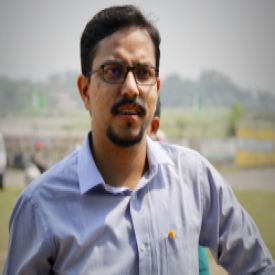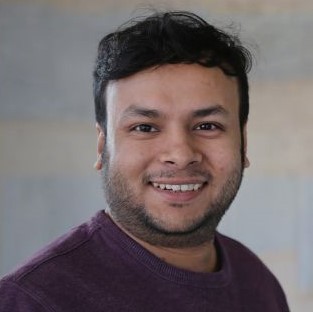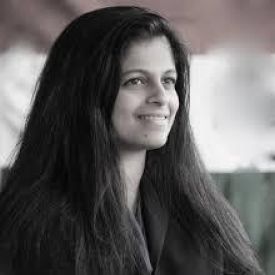The Indian Constitution reserves at least 33% of seats in rural local governments for women, and Bihar is among the nine states that have opted for 50% reservation. However, women remain heavily underrepresented at the state and central levels. This note investigates how gender interacts with caste, political campaigns, and experiences of discrimination, to shape state-level elections in Bihar.
Women are participating in elections now more than ever. According to the Election Commission of India (ECI), the percentage of female voters has increased from 47% in 2014 to 48.1% in 20191. Voter enrolment figures among women constituted more than half of the overall increase in the number of voters, with 43.5 million registrations during this period. This upward trend in female voting is particularly seen in rural areas (Roy and Sopariwala 2019). But does increased voting by women translate into a stronger voice for them in the political sphere?
With 33% of seats in Panchayati Raj institutions2 reserved for women across India, and with an even higher 50% reservation in the state of Bihar, there is reason to be optimistic about women’s political influence at the local level. But the situation is much less rosy at higher tiers of government. The World Gender Gap Report (2021) ranks India 28th from the bottom when it comes to the representation of women in legislative houses. The proportion of women MPs (members of parliament) in the Lok Sabha is currently only 14.6%.
Thus, accounts of increased women’s political participation must be tempered with the fact that women are severely underrepresented in the halls of power. As policy groups push for more women in public office, the critical question becomes whether socio-political conditions favour women getting elected. Therefore, we need a nuanced understanding of the factors that shape the political success of women candidates in ethnically diverse societies such as India.
Assessing the political success of women candidates in Bihar
As part of a recent IGC project (Banerjee et al. 2021), we aim to identify the key factors that impact the political success of women candidates at the state level. We select Bihar as a test case because it is one of India’s most populous and poorest states, with a long history of both caste- and gender-based prejudice and violence. Hence, conditions that shape women’s political success may be more plainly visible in this context. Moreover, we seek to examine whether the progressive initiatives that the state government has implemented to empower women have resulted in reducing gender disparities in the political sphere3.
We conducted a survey experiment during November and December 2020 in four districts of Bihar4. For comparison, we sampled respondents from assembly constituencies with a history of caste and communal violence, as well as those from constituencies5 that were far less volatile. Overall, we surveyed 2,000 respondents chosen at random from the electoral rolls, such that 250 people were selected from each of two legislative assembly constituencies in each of our four districts.
We asked respondents to select their preferred profile for an MLA (member of legislative assembly) candidate from four pairs of anonymised hypothetical candidate profiles, each randomised on gender, caste/religion General Caste, OBC (Other Backward Classes), SC (Scheduled Caste), and Muslim, and campaign appeal (protection from violence versus provision of development-related public goods and services). We also included party affiliation – Rashtriya Janata Dal (RJD) or Bharatiya Janata Party (BJP) – in two of the four candidate pairs. For example, a respondent might be asked to choose between an SC woman promising public services and representing the RJD, and an OBC man promising security and representing the BJP. During the survey, we also asked respondents a battery of individual- and household-level questions. In addition, we conducted over 50 qualitative interviews with women panchayat leaders, and with village-level political and development workers including JEEViKA6 functionaries.
Our study posed several questions to assess the conditions under which women candidates would be able to win office in Bihar. Our research design allows us to draw broad conclusions unimpeded by any other specific characteristics of real candidates. The key questions we explored are:
- Do voters tend to penalise women representatives if they promise security from communal and caste violence, instead of the delivery of public goods and services? How does exposure to caste-based violence and discrimination, both personally and from living in volatile districts, shape voters’ perceptions of these appeals, and of the gender of candidates?
- How do the caste or religious backgrounds of candidates interact with their gender to shape success with voters?
- Are citizens who have been represented by women at the local level more likely to choose women, among the hypothetical MLA candidate pairs that we present them?
- Does a women candidate’s affiliation with a political party affect her probability of winning office?
Hurdles faced by women candidates
Our study reveals that while women are preferred to men in some contexts, they still face significant hurdles. We summarise our results in Table 1.
Table 1. Gender preferences, by voter subgroup
|
Candidate characteristics |
Voter subgroup |
Average effect on candidate preference* |
|
Gender |
|
|
|
Woman |
Overall |
+ |
|
Woman |
Women |
+ |
|
Woman |
Men |
= |
|
Woman |
Low-violence district |
+ |
|
Woman |
High-violence district** |
= |
|
Woman |
Personal experience with caste-based discrimination |
+ |
|
Woman |
Panchayat with a woman pradhan |
= |
|
Woman affiliated with a party (BJP or RJD) |
Overall |
= |
|
Woman making a security-related campaign appeal |
Men |
- |
|
Woman making a security-related campaign appeal |
Women |
+ |
|
Muslim woman |
Overall |
- |
|
General caste woman |
Overall |
= |
|
General caste woman affiliated with the BJP*** |
Overall |
- |
|
Caste |
|
|
|
General caste (relative to SC) |
Overall |
- |
|
SC |
SC voters |
+ |
|
SC |
High-violence district |
+ |
|
SC making a security-related campaign appeal |
SC voters |
+ |
|
Religious background |
|
|
|
Muslim |
Muslim |
+ |
|
Muslim |
Overall |
- |
|
Muslim making a security-related campaign appeal |
Muslim |
= |
Notes: (i) *Key: + (Positive effect), - (Negative effect), = (Neutral effect). (ii) **When combined with exposure to woman MLA and experience of caste-based discrimination, the effect of a candidate being a woman is positive. (iii) ***The effect is relative to a general caste woman affiliated with the RJD.
First, we find that, in the aggregate, voters prefer women candidates (by about 1.5%) and candidates who offer public goods (by a more substantial 25%), and they are less inclined to support General Caste candidates and, most strikingly, Muslims. In addition, Muslim women suffer from a ‘double disadvantage’ in voter support, an indicator that intersectional effects are present. In particular, Muslim men candidates have an 11% disadvantage relative to non-Muslim candidates, while Muslim women suffer from an additional 4% lower voter support.
Breaking the results down, however, it becomes clear that women voters prefer female candidates and all candidates who offer protection from violence – and especially women candidates who offer protection. By contrast, men have no gender preference in their selections, and they tend to prefer candidates who offer public goods. These results indicate that women voters do indeed feel more vulnerable to ethnic and personal security threats than men, and that they tend to believe women leaders may understand and act on these threats more effectively than their male counterparts.
In the light of these results, it may seem logical that other marginalised groups of voters – Muslims and SCs – would prefer promises of security over public goods. However, we find no evidence to this effect. That said, SC and Muslim voters do prefer candidates of the same caste/religious identity as them, just as women prefer female candidates. This effect is especially notable among Muslim voters, who give a 30% bump to Muslim candidates. While SC voters give an extra boost to SC candidates who make security appeals, this is not the case for Muslim voters. Again, this indicates that voters who are members of marginalised groups do care about seeing members of those groups in office and that, in general, they feel more vulnerable than members of less marginalised communities.
Our next category of results focusses on how the experience of violence and discrimination mediates voting behaviour in India. First, we find that people in low-violence districts tend to prefer women candidates, whereas those living in more violent districts are more inclined towards men (or, rather, their preference for women disappears). This is compatible with the stereotyping argument that men are generally perceived as more effective at providing security. In addition to their greater orientation towards male candidates, voters in high-violence districts prefer SC candidates, which is not the case in low-violence districts (where OBC candidates are preferred). This may be because caste-based violence makes voters prefer a representative from a more marginalised group, though more research is necessary to have definitive evidence.
In this context, it should be noted that personal experience with caste-based discrimination makes people more likely to vote for women (by 10%). It is possible that people who report discrimination think women candidates will do more for them. Of course, as we have just noted, people in more violent districts do not prefer women, which may be an indicator that violence and discrimination have disparate effects. It is worth noting that discrimination is often a daily phenomenon, while violence is rarer but also more feared. Gender stereotypes may condition voters to believe that women candidates would be more likely to address daily discrimination but less ‘tough’ in combatting violence.
At the same time, we find that even in high-violence districts, exposure to caste discrimination combined with the experience of being represented by a woman MLA, still inclines voters to support woman candidates. This result suggests that in the presence of exposure to discrimination the negative effect of violent districts on support for women candidates may potentially be offset by other factors, including more exposure to woman’s leadership.
Some of the responses from our qualitative interviews show that many still consider women incapable of executing the responsibilities associated with the post of a panchayat pradhan, MLA, or MP, allegedly since most women lack ‘exposure’ to public life. A majority of the respondents also agree that women who do step out of their households to engage in village matters are often stigmatised as being immoral, which is likely why voters often prefer women candidates who demonstrate a domestic, traditional image.
A few respondents express that if a woman candidate is nominated or elected, governance becomes logistically more complicated as she may be dependent on the male members of her family, and is supposed to bear domestic responsibilities as well.
Effect of reservations for women at the local level
We do not find evidence to support the notion of ‘reservation spillover’, that is, having a woman representative at the panchayat level does not increase the likelihood of voters electing a woman MLA at the state level. Hence, our study suggests that, in the short run, reservations at the village level are not expected to bridge the existing gender gap in political representations at higher levels of government. However, in constituencies which have elected women MLAs, voters who have experienced caste discrimination prefer women as MLAs, implying that they have begun to trust women in the role of a lawmaker and perceive them as more sensitive to issues of injustice. In addition, reflecting findings from previous research (O’Connell 2017), our qualitative interviews indicate that panchayat reservations have assisted in the creation of a cohort of women leaders at the village level, ready to take on responsibilities at higher tiers. It remains to be seen whether this developing cohort can succeed in shifting the gender dynamics in future state legislative assembly elections.
Role of political parties
Political parties play an important role in the electoral politics of India, and Bihar is no exception. In our study, we observe that political parties only nominally consider reservations for women (or for candidates from other reserved categories), when deciding nominations and allocation of campaign resources. In-depth interviews with grassroots political workers also reveal that very few parties have internal policies regarding the minimum number of tickets that should be reserved for women. Overall, our findings from Bihar reflect that major parties have fielded only a small proportion of women candidates, despite the fact that turnout amongst women voters surpassed that of men in the most recent state assembly elections.
Given their importance in shaping women’s electoral success (Goyal 2020, Spary 2020), how political parties view women candidates is clearly a significant factor in shaping women’s representation. Our research shows that while voters have positive perceptions of women candidates overall, their preference for women candidates disappears when these candidates are affiliated with a political party. Further, when it comes to choosing candidates, partisan loyalties seem to trump gender.
Policy implications
Our study highlights the need for the Women’s Reservation Bill, 2008 (also known as the 108th Amendment Bill) that seeks to reserve one-third of the seats of Lok Sabha and State Legislative Assemblies, in order to make politics at higher levels of government more inclusive for women. Policy also ought to take cognisance of the especially high levels of discrimination faced by Muslim women candidates.
Overall, our findings suggest that women do possess a number of potential strengths as state-level candidates. They are preferred by women voters, especially when they promise security, and by voters who have experienced discrimination. That said, we find that partisan loyalties outweigh gender preferences, which supports the notion that parties need to do more to nominate women candidates in the first place in order to reduce gender disparities in women’s representation.
Notes:
- General elections were held in India in 2014 and 2019.
- Panchayati Raj is the system of local self-government of villages in rural India. It consists of Panchayati Raj Institutions (PRIs) such as Gram Panchayats (village level), Panchayat Samitis (block level), and Zilla Parishads (district level).
- For example, in addition to introducing a mandatory 50% reservation of seats for women in local government, the state government of Bihar has also implemented the JEEViKA programme as a tool to empower women in rural areas.
- The four districts are Gaya, Jamui, Madhubani, and Supaul. Full Covid-19 protocols were in effect during data collection.
- There are three major levels of government in India. At the centre, candidates are elected to the Parliament (Lok Sabha), at the state to the Legislative Assembly (Vidhan Sabha), and at the local level either to the Panchayati Raj Institutions for rural areas or to municipal institutions for cities.
- The Bihar Rural Livelihoods Project (BRLP), locally known as JEEViKA, is an autonomous body under the Department of Rural Development, with the objective of social and economic empowerment of the rural poor through investment in capacity-building of public/private service providers, promoting the development of microfinance and agribusiness sectors, and developing organisations of the rural poor and producers to enable them to access and better negotiate services, credit and assets from public/private sector agencies, and financial institutions.
Further Reading
- Banerjee, S, C Hankla, A Banerjee and A Thomas (2021), ‘She Wins – Electing women in ethnically divided societies: The case of Bihar’, International Growth Centre.
- Goyal, T (2020), ‘Local Female Representation as Pathway to Power: A Natural Experiment in India’, Working paper.
- O’Connell, SD (2017), ‘Quota policies and career advancement: Evidence from Indian politics’, Ideas for India, 28 August.
- Roy, Prannoy and Dorab R Sopariwala (2019), “On the rise: women voters in India”, Significance, 16(3): 8-9.
- Spary, Carole (2020), “Women candidates, women voters, and the gender politics of India’s 2019 parliamentary election”, Contemporary South Asia, 28(2): 223-241




















0 Comments